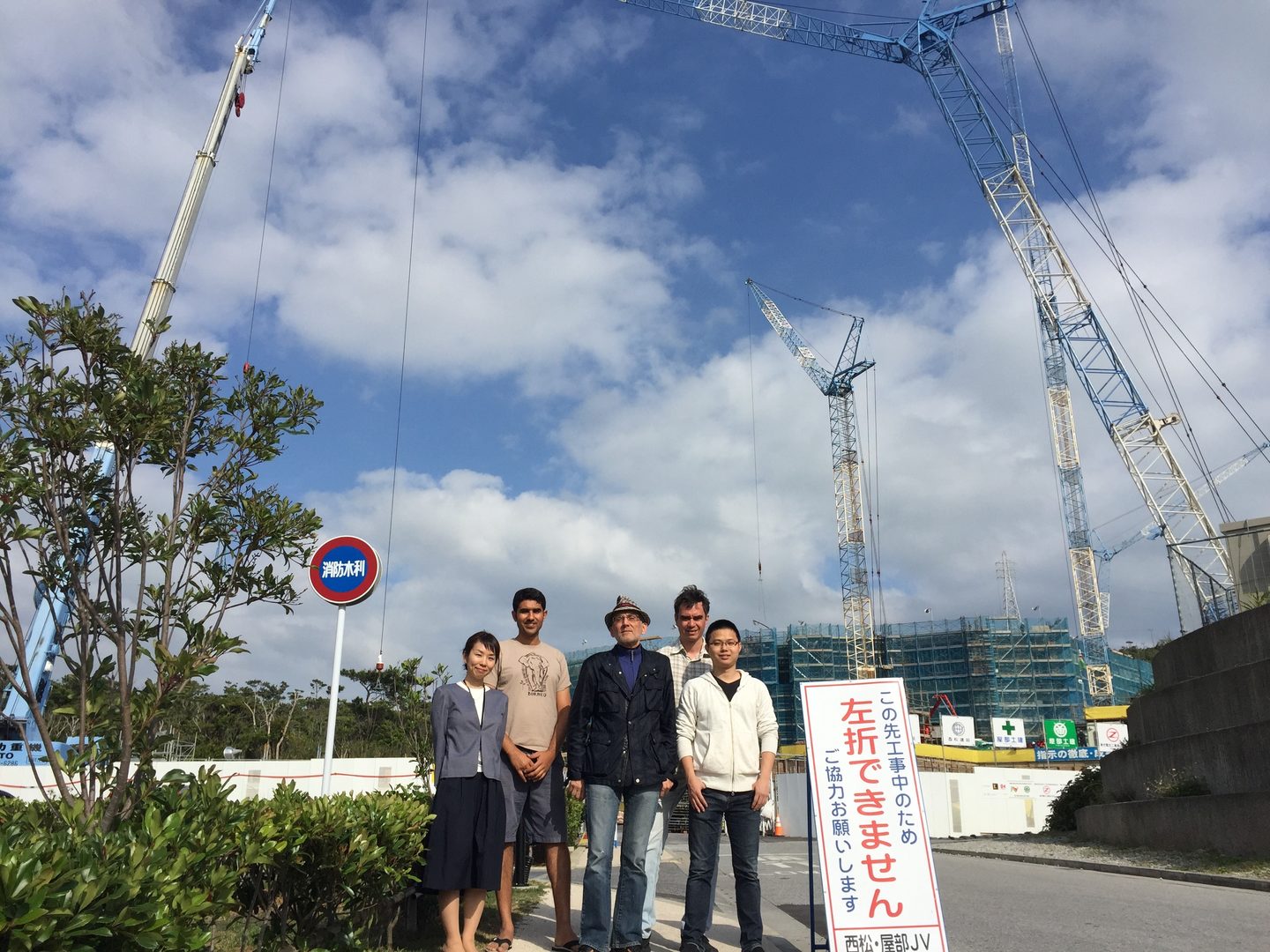FY2019 Annual Report
Continuum Physics Unit
Professor Gustavo Gioia

Abstract
The Continuum Physics Unit carried out experimental, computational and theoretical research on rough-walled turbulent friction in two and 3 dimensions, on the nature of "slugs" in transitional pipe flow, and on stratified-flow analogues of the law of the wall, the log law and the defect law.
1. Staff
- Gustavo Gioia, Professor
- Tomoe Owan, Research Unit Administrator
2. Collaborations
2.1 Theory of spectral link in turbulent flows
- Type of collaboration: Scientific collaboration
- Researchers:
- Prof. Pinaki Chakraborty, OIST
2.2 Experiments on transitional pipe flows
- Type of collaboration: Scientific collaboration
- Researchers:
- Prof. Pinaki Chakraborty, OIST
- Prof. Jun Sakakibara, Meiji University, Japan
2.3 Frictional drag in two-dimensional flows
- Type of collaboration: Scientific collaboration
- Researchers:
- Prof. Pinaki Chakraborty, OIST
- Dr. Alexandre Vilquin, University of Bordeaux, France
- Prof. Hamid Kellay, University of Bordeaux, France
- Prof. Charles-Henri Bruneau, University of Bordeaux, France
3. Activities and Findings
3.1 Rough-walled turbulent friction in two and 3 dimensions
-In this continuing collaborative project with researchers at the University of Bordeaux, France, we are carrying out unprecedented measurements of the turbulent friction in rough-walled 2D flows, a kind of flow we have been able to realize in soap films. The aim is to verify the predictions of the spectral theory of turbulent fluid friction in rough-walled flows. These predictions concern the asymptotic (Reynolds number-independent) relation between the fluid friction f and the relative roughness r/R (where r is the roughness lengthscale of the wall and R is the characteristic lengthscale of the flow), which according to the spectral theory depends on the exponent of the spectrum of turbulent energy, the "spectral exponent," which in turn depends on the dimesionality of the flow, being 5/3 in 3D (corresponding to the "energy cascade") and 3 in 2D (corresponding to the "enstrophy cascade"). Thus the spectral theory predicts f \propto (r/R)^1/3 and f \propto (r/R) in 3D and 2D, respectively, contrary to the classical theory of turbulent friction, which is constitutionally incapable of predicting what kind of difference, if any, should be expected between the f--r/R relation in 2D and 3D.
3.2 The nature of "slugs" in transitional pipe flow
-Previous work on transitional pipe flow carried out at our laboratory at OIST revealed that the turbulent friction associated with the "slugs" of transitional pipe flows---segments of non-laminar flow which move along the pipe surrounded by laminar flow---revealed a frictional signature consistent with fully developed turbulence. Motivated by this insight, we are carrying out extensive experimental research (using particle image velocimetry) and computational research (using direct numerical simulations) aimed at the characterization of the mean-velocity profiles and the turbulent shear-stress profiles of slug flow. A particular challenge of the experimental research stems from the multiphase nature of transitional flows.
3.3 Stratified-flow analogues of the law of the wall, the log law and the defect law
-In this project we use dimensional analysis and suitable similarity assumptions to formulate analogues of the classic laws of uniform turbulent flows for the case of stratified turbulent flows. To put these analogues of the classic laws to the empirical test, we have gathered turbulent mean-velocity profiles from experiments in thermally stratified open-channel flows. The analogues are in good accord with the simulation data as well as with the predictions of new spectral theory which allows us to compute complete, wall-to-wake mean-velocity profiles of thermally stratified open-channel flows in terms of the phenomenological model of the spectrum including a power-law inertial range and suitable corrections for the effects of viscosity and finite domain.
4. Publications
4.1 Journals
- R. T. Cerbus, C-C. Liu, G. Gioia, and P. Chakraborty. 2020. Small-scale universality in the spectral structure of transitional pipe flows. Science Advances, Vol. 6, no. 4, eaaw6256.
- R. T. Cerbus, J. Sakakibara, G. Gioia, and P. Chakraborty. 2020. The turbulent flow in a slug: a re-examination. Journal of Fluid Mechanics, vol. 883, article A13.
- D. Zhang.2019. Spectral link and macroscopic non-universality in turbulent plane Couette flow. , ,
4.2 Books and other one-time publications
Nothing to report
4.3 Oral and Poster Presentations
1. P. Chakraborty, R. Cerbus, C-C. Liu, G. Gioia, Whorls in transitional pipe flows, Max Planck-Croucher Symposium 2019: Matter to Life, OIST, November 20 (2019)
2. P. Chakraborty, T. Sabuwala, C. Butcher, G. Gioia, How the moon got its rays, Tokyo University, Tokyo, Japan, January 9 (2020)
3. P. Chakraborty, R. Cerbus, C-C. Liu, G. Gioia, Whorls in transitional pipe flows, Tokyo University, Tokyo, Japan, January 10 (2020)
5. Intellectual Property Rights and Other Specific Achievements
Nothing to report
6. Meetings and Events
6.1 Advances in the analysis of metal sheet laser forming processes
- Date: February 20, 2020
- Venue: OIST Campus Lab3
- Speaker: Prof. Diego Celentano (Pontifical Catholic University of Chile)
7. Other
Nothing to report.



